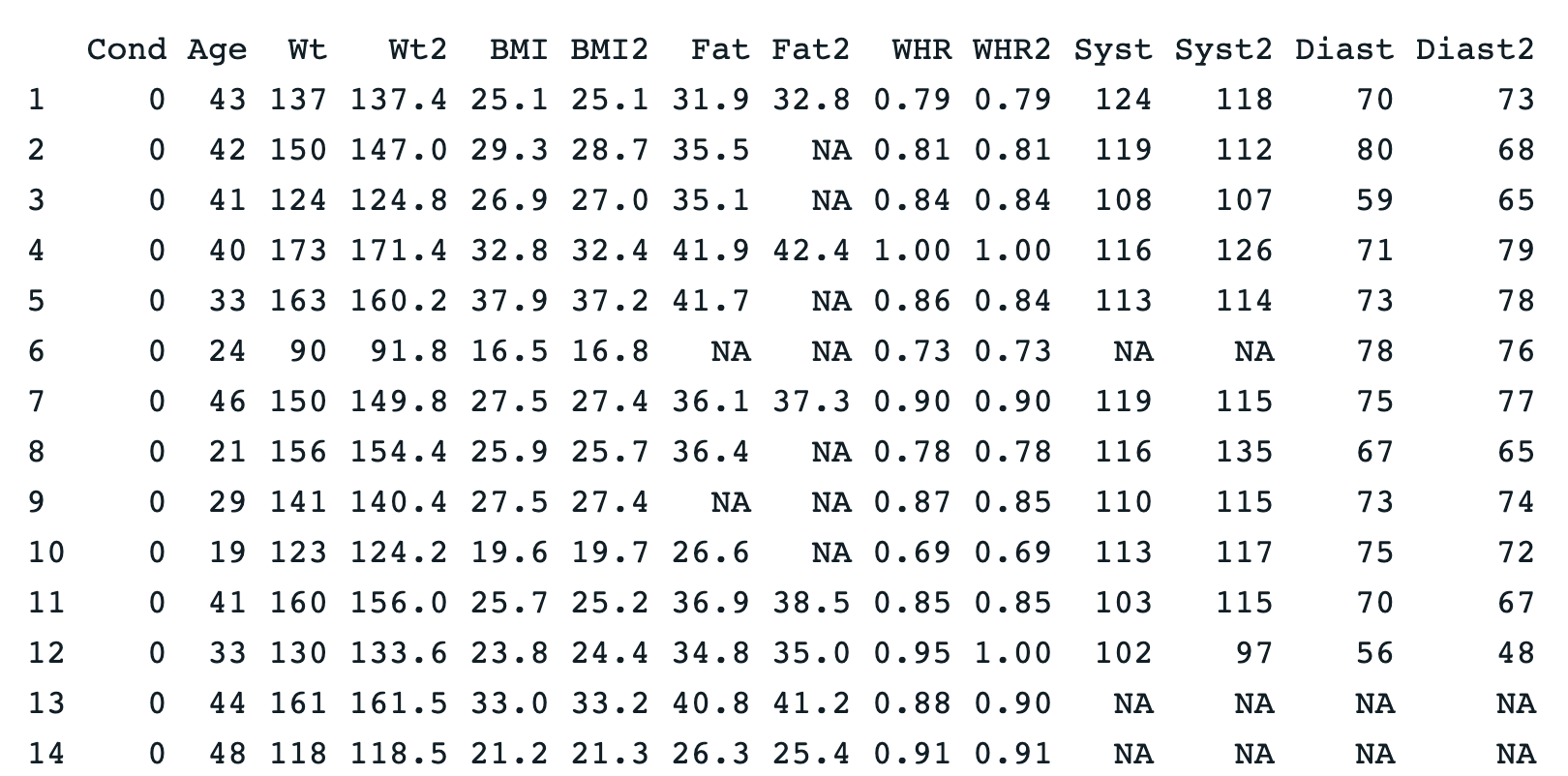print()
The print() function will print out, or make visible in the output, any contents in the argument.
 Example 1:
Example 1:

Example 1:
The print() function can be helpful for annotating code output. Put content in "quotations" to avoid error messages.
print("Analysis of Variance")
print("p = 0.02")
Example output:


Example 2:
You can also use the print() function to printout the contents of a data frame.
# print an entire data frame
print(MindsetMatters)
Example of output from running the code above (truncated):

# print a single column (variable) of a data frame
print(MindsetMatters$Age)
Example of output from running the code above:

Related Articles
Printing Pages of the Book
If you need to print pages of the book, you may find that printing them from Chrome results in oddly-formatted pages. You will get better-formatted pages if you print using either Safari or Firefox as your browser. If using Safari, go the the Safari ...tail()
The tail() function is used to get the last rows of a vector or data frame. By default, it will print out the last 6 rows of the object, but you can also specify the number of rows you would like to print out. The tail() function is similar to the ...head()
The head() function is used to get the first rows of a vector or data frame. By default, it will print out the first 6 rows of the object, but you can also specify the number of rows you would like to print out. The head() function is similar to ...sample()
The sample() function will take a random sample of rows from the data frame, without replacement (of the specified sample size). For random sampling with replacement, see the resample() function. Example 1: You can take a closer look at how the ...resample()
The resample() function will take a random sample of rows from the data frame, with replacement (of the specified sample size). It can be useful if you want to bootstrap a sampling distribution of statistics (e.g., b1, PRE, F) (Bootstrapping ...